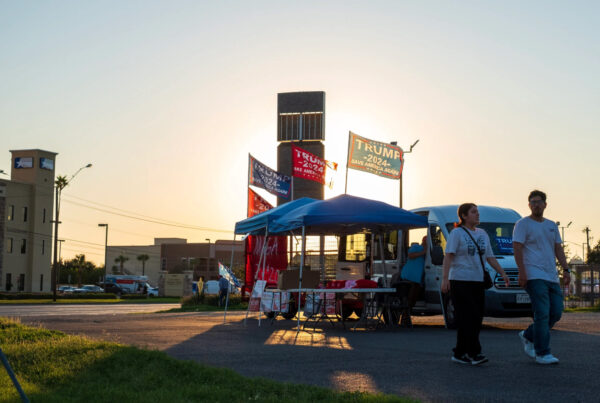It’s a popular phrase around these parts: Don’t California my Texas.
The saying has become popular, especially among Texas Republicans seeking to warn against an impending blue wave as droves of Californians relocate to Texas’ largest cities.
But are people moving from blue states actually causing a change in the Texas political landscape?
The research suggests perhaps not.
Matt Zdun, a data reporter for the Houston Chronicle, said a research team from the University of Maryland and UT-Austin looked into it. Specifically, they tracked people who voted in California between 2000 and 2016 and then moved to Texas and were registered to vote by the time the 2020 election happened.
Because in California voters register with a certain party, the team was able to track trends for who moved where in the Lone Star State.
“The bottom line is that there really isn’t evidence to show that there’s some blue wave happening in Texas because of the people moving from California,” Zdun said. “And that’s for a number of reasons. For one thing, there’s not a great divide in the political parties of the people who are moving over here to Texas. If anything, it’s mostly Republicans. So there are slightly more Republicans that are moving over here to Texas.
And so the authors in the paper, they show that in a state as big as Texas, with 18 million+ registered voters, it would take a much wider divide in the political parties to make any kind of blue wave dance. There would have to be many more Democrats than Republicans settling here in Texas.”
» GET MORE NEWS FROM AROUND THE STATE: Sign up for Texas Standard’s weekly newsletters
Zdun said Williamson County in the Austin metro area is a good example of the overall trend. Researchers tracked almost 30,000 voters who moved from California to Williamson County. The county also went for Biden over Trump in 2020 by a very narrow margin, when it had been solidly Republican before.
“So it’s a shifting county. It’s becoming more Democratic. But if you look at the Californians that moved in, of those about 30,000 Californians over the past couple of decades, most of them were Republicans — 44% of them were Republicans,” Zdun said. “Only 29% were Democrats. And the rest could not be determined based on their political party.
But it’s an interesting case study because it’s a county that is changing. It’s becoming more Democratic, but you’re actually seeing more Republicans move in from California.”
Despite these numbers, the narrative of Californians turning Texas politics blue persists. Zdun said there could be a couple reasons for that.
“California is the top state that Texas adults were born in, outside of Texas. So there are a lot of Californians here. And so it’s easy to think that since California makes up the largest non-Texas share, that those folks are changing politics, even if that’s not really what is happening according to the data,” he said.
“Ultimately, people from California make the choice to move to Texas based on economic reasons first and foremost. But then political reasons do come into play. And often at these smaller geographies, you do see people moving into the areas that correspond with their existing political beliefs. So you do see sort of pockets that were already blue becoming bluer or pockets that were already red becoming even redder.”













